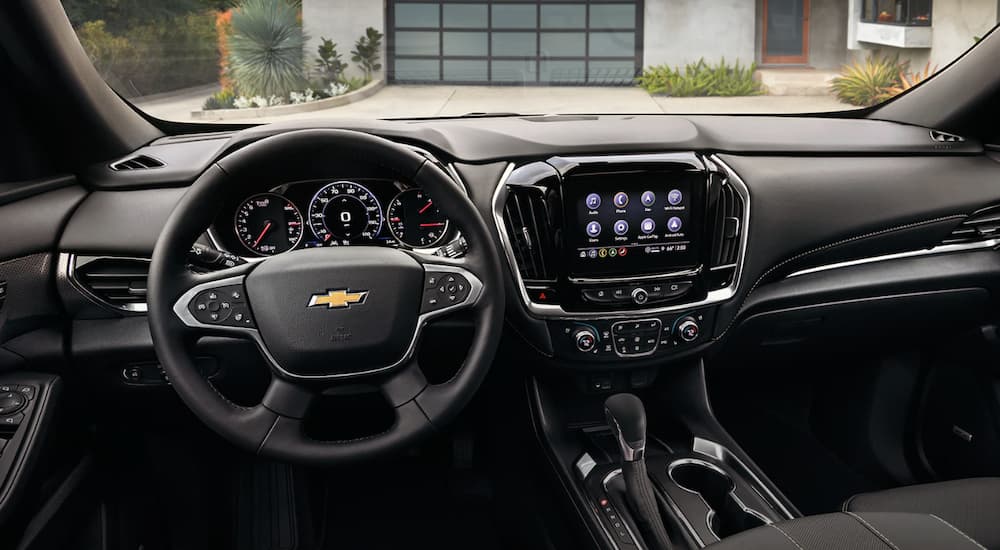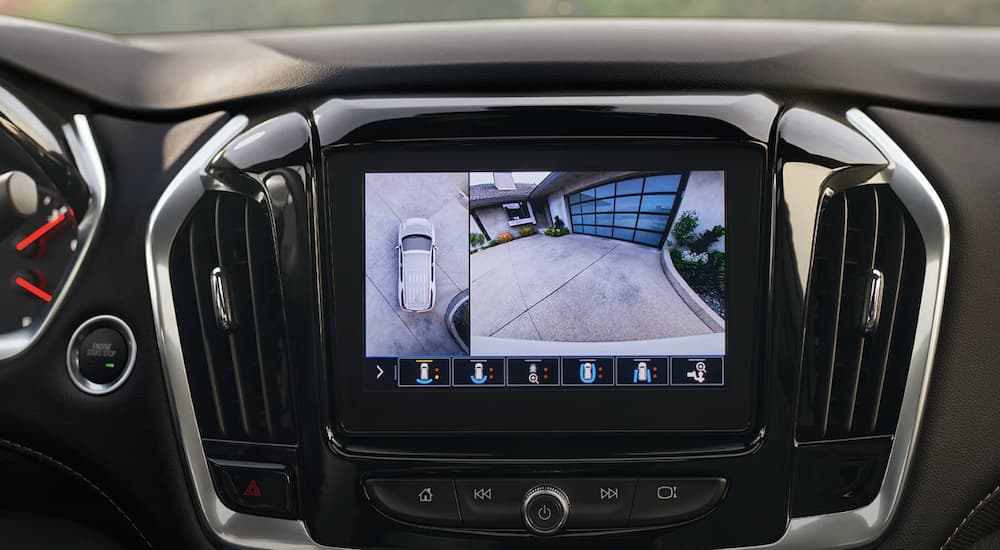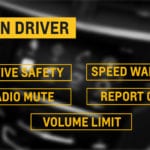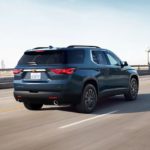What’s the most challenging part of being a parent? I’ve come to realize that life is made up of many rites of passage. First, there’s a baby’s entry into toddlerhood with his first steps, followed by an ever-growing vocabulary of words and phrases marking his development into a tiny human with big opinions. These rites of passage continue, if you will, with every school year and achievement, leading to one of the most significant occasions of any teenager’s young life––getting behind the wheel.
Tossing the keys to a teen driver is no easy feat for any parent because it ignites another realm of worry beyond our control. There’s the constant worry if they’ll drive safely, wear their seatbelt, or get distracted by their phone or something else. Fortunately for parents, models like the 2022 Chevy Traverse help mitigate that worry with what’s known as Teen Driver Technology. Once you see what the technology can do for your teen and your peace of mind, you’ll see why there’s a good chance a group of parents had a hand in its design.
Introducing Teen Driver Technology
Chevy’s reputation as an automotive pioneer and innovator dates back to the early 1900s. Fortunately, that reputation is embedded in Chevrolet’s day-to-day operations and drives every member of the team to look for ways to improve the Chevy lineup and everything it offers. In 2016, that pioneering spirit took the spotlight when Chevy debuted a revolutionary new feature designed for teen drivers and their parents.
Debuting on the 2016 Malibu, Teen Driver made history as the industry’s first built-in system to provide parents with feedback on their teen driver’s performance. The technology recognizes the worry that parents have when their teen gets behind the wheel, but it does more than that. It considers the risk of inexperience and actively works to mitigate that risk.
“According to the Insurance Institute for Highway Safety, in the United States, the fatal crash rate per mile driven for 16- to 19-year-olds is nearly three times the rate for drivers ages 20 and over,” GM reported in 2016. Teen Driver doesn’t just give parents peace of mind but proactively works to keep teen drivers safe. It works to reduce those numbers using the age-old truth that knowledge is power.
How It Works and What It Does
Teen Driver operates by providing information and setting your teen up for success. On models like the 2022 Traverse, it’s akin to a virtual driving coach with the focus of an Olympic athlete. Its only goal is to get your young driver safely from Point A to Point B. So, how does it work?
Teen Driver is accessible via the Traverse’s center touchscreen display, known as the Chevrolet infotainment system. Once you find the Teen Driver icon, you can use a PIN to access the Teen Driver menu and register your teen’s key fob. The registration process takes minutes and tells the Chevy to activate the Teen Driver system when that particular key fob is used.
Setting up the system on older Chevy models is just as simple. For example, the only difference between setting up Teen Driver on the 2022 Traverse and the 2016 Malibu is the name of the infotainment system. Today, the system is known as Chevrolet Infotainment 3, but in 2016 it was known as MyLink. Fortunately, the process is the same with either system, requiring a PIN and key fob registration.
Speed Limitations
Did you know that teen drivers are more likely to speed than older, more experienced drivers? Chevy’s done extensive research on teen driving behavior and poor driving choices that stem from inexperience. As a result of that research, Teen Driver is designed to help teen drivers make better choices, such as not speeding. For example, you can set speed limitations so that anytime your teen goes over the set limit, they are notified with audible and visual warnings. In addition, if your teen driver frequently speeds, you can activate the speed limiter feature that restricts the Chevy’s maximum vehicle speed to 85 mph.
Limited Distractions
Part of the biggest concern for parents is knowing that a teen driver is more easily distracted. Even as adults, our attention is stretched thin between passengers that require our attention, navigation systems alerting us to upcoming turns or changes to the route, and an endless barrage of smartphone notifications. Losing focus is easy for even the most experienced drivers, so you can imagine what a teen faces when they get behind the wheel. In fact, Chevy reports that approximately 93% of teen drivers play loud music when they’re driving, which sets the stage for distraction.
Teen Driver helps mitigate that risk with two settings: Audio Limit and Seat Belt Audio Mute. Audio Limit allows you to set a maximum volume for the radio, limiting how much your teen can rock out to their favorite tunes. Seat Belt Audio Mute goes one step further and mutes the audio system until your teen driver and any passenger in the front seat fasten their seatbelts. This eliminates any initial distraction that might cause your teen to forget to buckle up.
Seatbelt Reminders
Over the last few years, Chevy’s innovation took Teen Driver to the next level with a new cutting-edge feature known as Buckle to Drive. It’s the first tool of its kind in the industry and is designed to save lives and actively promote safe driving habits that start the moment an individual gets in the driver’s seat. So how does it do this? Buckle to Drive prevents your teen from shifting out of Park if their seatbelt isn’t fastened, providing an audible and visual alert to “Buick Seat Belt to Shift.”
Knowledge Is Power
Think about this: if you don’t know that you’re doing something wrong, how will you ever improve? For example, let’s say you’re trying to perfect your golf swing. Do you ask the golf pro what you’re doing right, or do you ask what you’re doing wrong or what needs improvement? The goal isn’t to appease your ego but to improve your game, right? That’s when knowledge is power, and the same is true when your teen driver is behind the wheel.
Chevrolet’s Teen Driver Technology is built on the same premise. Most teens won’t admit that they sped through an intersection or that they perpetually tailgate others, listen to their music too loud, or frequently check their phones when they should be looking at the road. Likewise, they’re not apt to confess that the automatic emergency brakes kept them from careening into another vehicle. This lack of information can be detrimental to their safety, especially if a parent doesn’t have the opportunity to encourage better performance.
Teen Driver doesn’t rely on your teen to tell all and instead gives you the information you need. It creates coachable moments that start the conversation about where your teen is doing well and what areas need improvements. For example, the in-vehicle report card shows you data like the distance driven, maximum speed, overspeed warnings, and the instances where the throttle was wide open. It also shows you the number of forward collision alerts and instances where traction or stability control was engaged.
Setting New Drivers up for Success
Chevy’s Teen Driver technology promotes safe driving habits and gives teen drivers a greater advantage over inexperience. While it will never make up for actual time spent behind the wheel, Teen Driver’s keen parental instincts lessen the curve, set teens up for success, and give parents an iota of confidence that their kid is safe in the driver’s seat. Of course, it will never entirely eliminate the worry that this epic rite of passage brings, but it’s certainly an improvement and one that only Chevrolet offers.






